Brie
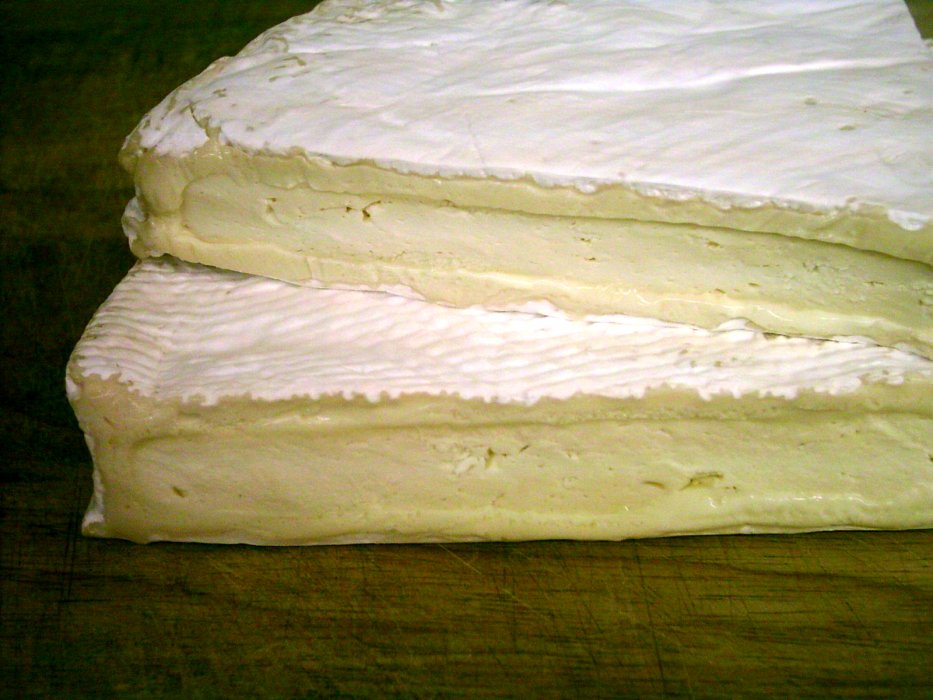 Brie cheese is equally loved and misunderstood. Do I eat the rind or don't I. Warm or cool? This month we'll explore the history, process and all the wondeful things you can do with Brie. As this is the month of Christmas and New Years, Brie, especially when baked or combined with other ingredients or flavors, is a popular addition to
Brie cheese is equally loved and misunderstood. Do I eat the rind or don't I. Warm or cool? This month we'll explore the history, process and all the wondeful things you can do with Brie. As this is the month of Christmas and New Years, Brie, especially when baked or combined with other ingredients or flavors, is a popular addition to
any party or gathering.
Brie is a soft cow's milk cheese named after
Brie, the French province in which it originated. It is pale in color with a slight greyish tinge under crusty white mold; very soft and savory with a hint of ammonia. The white moldy rind is edible, and is not intended to be separated from the cheese during consumption.
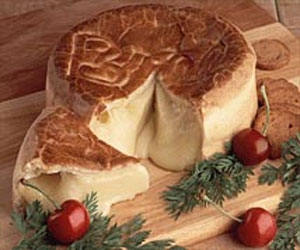 The region in France that gave its name to this cheese Brie is, in the French language, feminine: La Brie, but French products take the gender of their general category; in this case cheese Le fromage is masculine, and so Brie is also masculine, Le Brie.
The region in France that gave its name to this cheese Brie is, in the French language, feminine: La Brie, but French products take the gender of their general category; in this case cheese Le fromage is masculine, and so Brie is also masculine, Le Brie.
Brie may be produced from whole or semi-skimmed milk. The curd is obtained by adding rennet to raw milk and heating it. The cheese is then cast into molds, sometimes with a traditional perforated ladle called a "pelle à 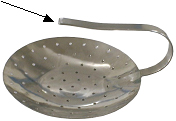
brie." The mold is filled with several thin layers of cheese and drained for approximately 18 hours. The cheese is then taken out of the molds, salted, innoculated with cheese mold (Penicillium candidum, Penicillium camemberti and/or Brevibacterium linens) and aged in a cellar for at least four to five weeks.
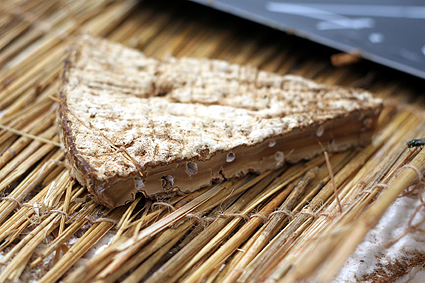 If left to mature for longer, typically several months to a year, the cheese becomes stronger in flavor and taste, the pâté drier and darker, and the rind also darker and crumbly, and is called Brie Noir (Fr: Black Brie). Around
If left to mature for longer, typically several months to a year, the cheese becomes stronger in flavor and taste, the pâté drier and darker, and the rind also darker and crumbly, and is called Brie Noir (Fr: Black Brie). Around
the Île-de-France, where Brie is made, the people enjoy soaking this in café au lait and eating it for breakfast. Over-ripe brie contains an unpleasant, excessive amount of ammonia, which is produced by the same micro-organisms required for ripening.
The History
 The oldest recorded evidence that anyone could find of the existence of Brie was found in the chronicles of Charlemagne. At that time the Emperor in power had a taste of the now-famous cheese in the city of Brie around the year 774 BC. It is said that Louis XVI's last and dying wish was supposedly to have a final taste of Brie.
The oldest recorded evidence that anyone could find of the existence of Brie was found in the chronicles of Charlemagne. At that time the Emperor in power had a taste of the now-famous cheese in the city of Brie around the year 774 BC. It is said that Louis XVI's last and dying wish was supposedly to have a final taste of Brie.
Brie is also known as Brie de Meaux and is considered one of the most popular of the 400+ cheeses from France. It's popularity can be attributed to a competition that came about around 1814. During a Vienna Congress, an argument broke out among the participants, regarding which country made the best and finest cheese.
Louis XVI
The end result was that a Frenchman by the name of Talleyrand, suggested a competition between the different countries and their national cheeses. Of course, he was convinced that France
would win. And of course, they did! Brie de Meaux was the winner and became known as the King of Cheeses. It was an instant hit and became an overnight success that swept Europe.
In France, there are only 5 or 6 real Brie de Meaux producers left. Apparently it's an economically-challenged industry to get into. Brie has a very fragile curd that is easily broken and requires a special room built only for the use of making Brie and Triple Cream. It has to maintain just the right temperature or the Tallyrand maturation process will not work. This, in itself, makes Brie hard to make and evidently requires quite an investment.
Serving Brie properly consists of allowing it to come to room temperature first. It's always good served with some kind of wine and here are some excellent suggestions to serve with any kind of Brie appetizer. A red Cote-du-Rhone, a red Bordeaux or Burgundy, and of course, it always goes well with a good quality Champagne. Our suggestion is to choose the wine you prefer, for instance, if you are serving your brie with fruit, such as apples, or pears, a simple Chardonnay would be a wonderful choice.
We highly recommend this wonderfully versatile cheese and have included a great recipe for you to try.
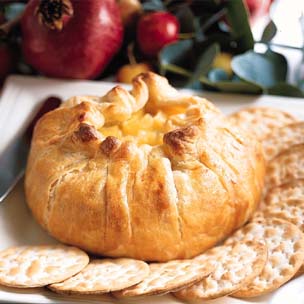 Baked Brie en Croute with Apple Compote
Baked Brie en Croute with Apple Compote
Servings: An appetizer that serves 6 to 8
Courtesy of Williams-Sonoma Kitchen.
This dish can be made up to 2 weeks in advance. Assemble the pastry, cheese and apple compote, but don't brush the dough with the egg wash. Instead, wrap the pastry tightly with plastic wrap and freeze until ready to bake. Then brush the frozen pastry with the egg wash and bake in a 350 degree F (180 degrees C) oven for 45 to 50 minutes.
Ingredients:
1 tbsp. unsalted butter
2 Golden Delicious apples, cored, peeled and cut into 1/2-inch dice
1/4 cup granulated sugar
1/8 tsp. ground cardamom
1 round Brie cheese, 6 to 8 oz. and about 4 1/2 inches wide, slightly chilled
10-inch round of puff pastry dough, rolled out to 1/4-inch thickness
1 egg, beaten with 1 tbsp. water
Plain water crackers for serving
Method:
In a 2-quart saute pan over medium heat, melt the butter. Add the apples and saute, stirring occasionally, until the apples are tender and have released most of their liquid, 5 to 7 minutes. Add the sugar and cardamom, stir to dissolve and cook, stirring occasionally, until most of the liquid has evaporated, 12 to 15 minutes more. Remove from the heat and let the apple compote cool to room temperature.
Position a rack in the center of an oven and preheat to 375 degrees F (190 C). Line a baking sheet with parchment paper.
With a sharp knife, cut the cheese in half horizontally. On a clean work surface, place one half of the cheese, sliced side up, and evenly spread 1/2 cup of the apple compote over it. Set the other half, sliced side down, over the compote and spread an additional 1/2 cup compote over the top.
Place the dough on a lightly floured surface and set the cheese in the center of the dough. Fold the dough up over the sides of the cheese, pleating the upper edges to fit snugly around the cheese. Pinch the dough together in the center to seal. Brush the dough evenly with the egg wash and place on the prepared baking sheet.
Bake until the pastry is golden all over and crisp, 40 to 45 minutes. Let it rest for 5 minutes, then transfer to a platter along with a sharp knife and the crackers. Serve any remaining compote alongside.
Brie, France
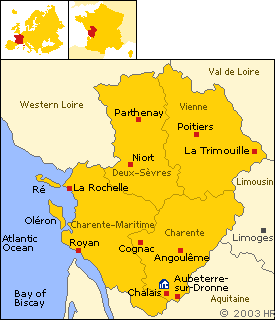 Brie is a historic region of France most famous for its dairy products, especially Brie cheese. It was once divided into two sections ruled by different feudal lords: the western Brie française, corresponding roughly to the modern département of Seine-et-
Brie is a historic region of France most famous for its dairy products, especially Brie cheese. It was once divided into two sections ruled by different feudal lords: the western Brie française, corresponding roughly to the modern département of Seine-et-
Marne in the Île-de-France région; and the eastern Brie champenoise, forming a portion of the modern département of Marne in the historic region of Champagne (part of modern-day Champagne-Ardenne).
Brie forms a plateau with few eminences, varying in altitude between 300 and 500 feet in the west, and between 500 and 650 feet in the east. Its scenery is varied by forests of some size—the chief being the Forêt de Senart, the Forêt de Crécy, and the Forêt d'Armainvilliers. The surface soil is clay in which are embedded fragments of siliceous sandstone, used for millstones and constructional purposes; the subsoil is limestone. The Yères, a tributary of the Seine, and the Grand Morin and Petit Morin, tributaries of the Marne, are the chief rivers, but the region is not abundantly watered and the rainfall is only between 20 and 24 inches.
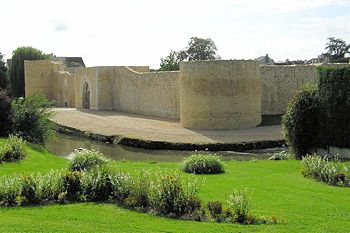
Brie-Comte-Robert is on the edge of the plain of Brie and was formerly the capital of the Brie française. The castle of Brie-Comte-Robert was built at the end of the 12th century, when Robert I of Dreux, brother of the King Louis VII, was lord of Brie. Archaeological clues, elements of decoration and the choice of construction techniques, suggest the architecture of this turning point in history.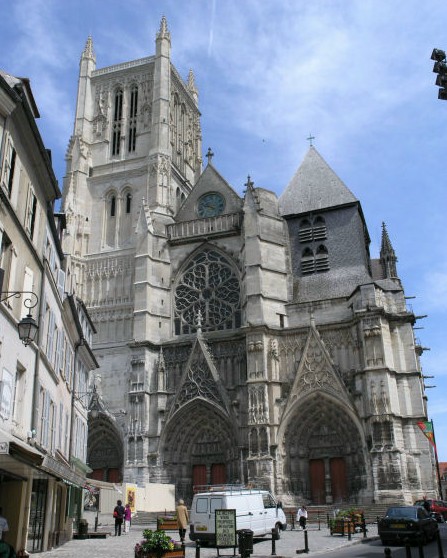
Meaux is known for Brie de Meaux cheese and the Meaux Cathedral. This urban area is a satellite city of Paris.
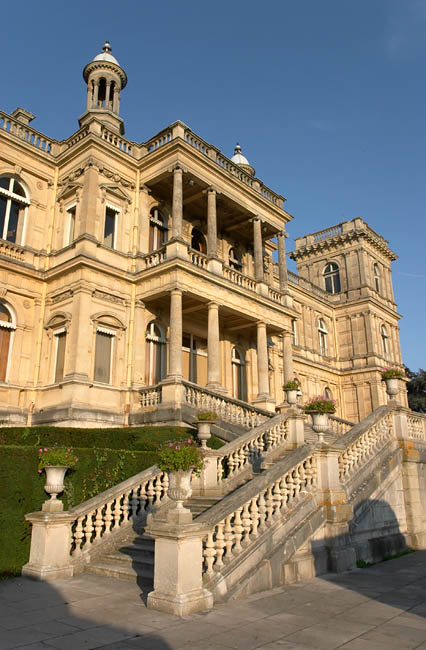
The Château de Ferrières. This castle was built in the 19th century by an English architect working for a Baron de Rothschild. Its extensive park was once considered one of the most beautiful in France.
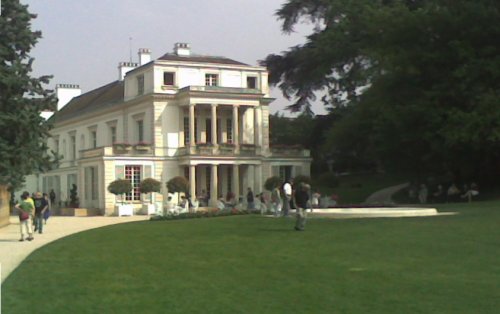
Yerres lies in the North-Eastern part of Essonne and bordering the Val-de-Marne département. The town extends on both sides of the valley through which flows the river Yerres. The highest point is the wooded Mont Griffon. In 1860 the father of Gustave Caillebotte bought an estate on the banks of the river Yerres and the famous impressionist painted around 80 paintings there, until the sale of the estate in 1879.


